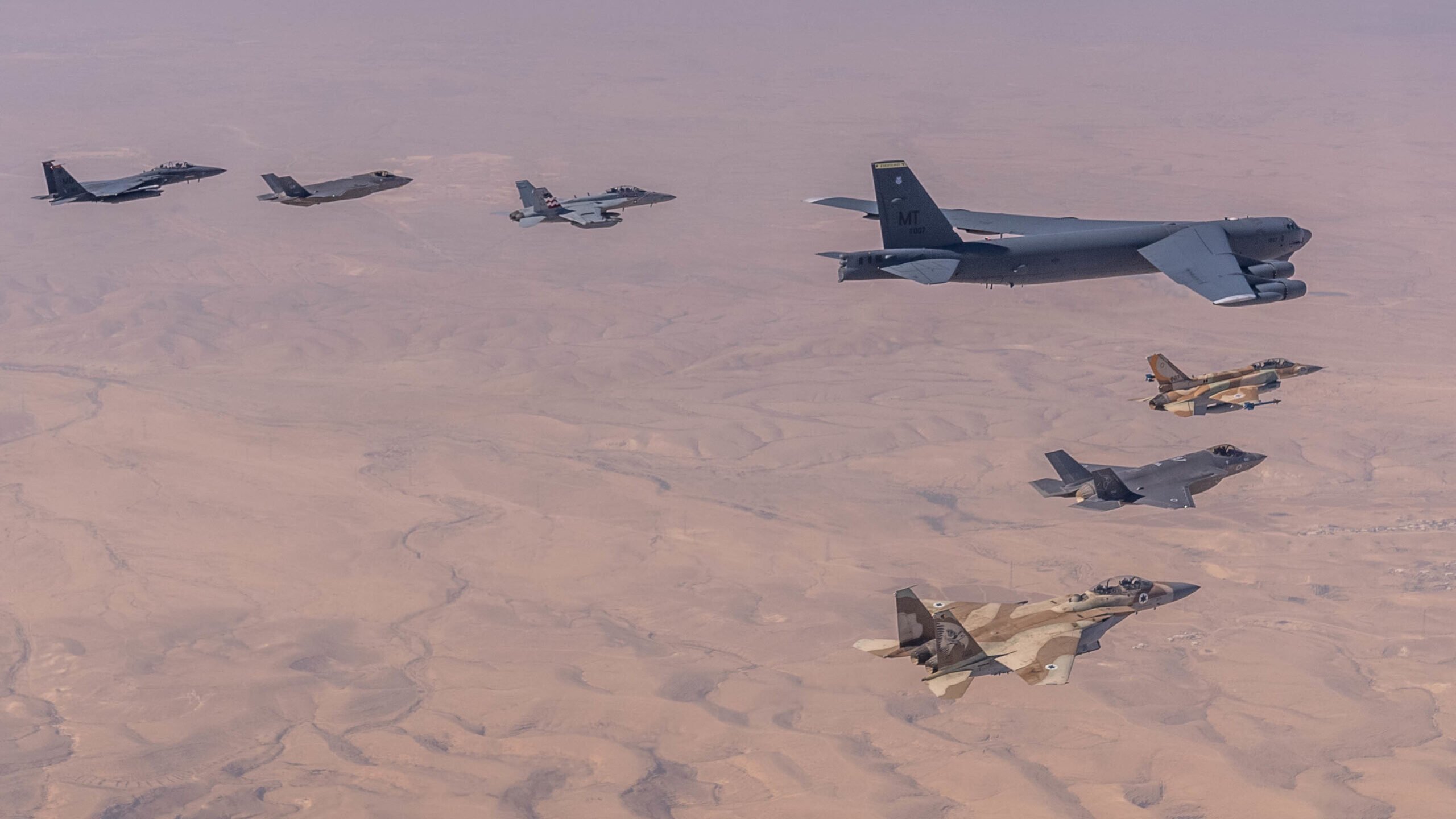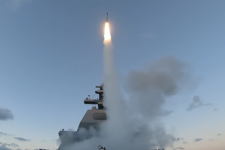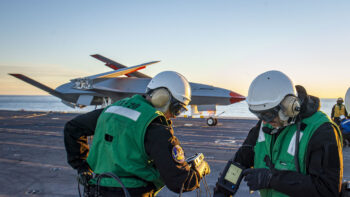
Air assets take part in the bilateral Juniper Oak exercise between US and Israeli forces.(Photo courtesy of the IDF Spokesperson’s Office, via DVIDS)
TEL AVIV — As senior US officials and their Israeli counterparts attempt delicate diplomacy amid some mutual suspicion and a new cycle of Israeli-Palestinian violence, the American and Israeli militaries show little sign of tension and, defense sources say, are working together as closely as ever.
According to the sources, in the wake of the massive bilateral exercise known as Juniper Oak, US and Israeli forces have developed new “mechanisms” for future cooperation on joint missions.
US Central Command chief Gen. Michael Kurilla rather blandly described the sprawling live-fire exercise, which concluded last week and involved dozens of aircraft as well as naval and electronic warfare assets, as one that “improves our interoperability on land, in the air, at ease, in space, and in cyberspace with our partners…” It was also, to many observers, a blunt warning to Tehran.
Juniper Oak 23.2, the largest ever US-Israel combined exercise, continues.
Look 👀for the culminating Juniper Oak video tomorrow. pic.twitter.com/xyme9p5aPe
— U.S. Central Command (@CENTCOM) January 26, 2023
The idea wasn’t lost on Israeli Minister of Defense Yoav Gallant, who referenced the exercise during the visit earlier this week by US Secretary of State Antony Blinken, saying, the US and Israel are “united in the need to face Iran and anyone who threatens peace and stability.”
Blinken had been in the country in part to “underscore the urgent need for both parties [Israelis and Palestinians] to take steps to deescalate tensions in order to put an end to the cycle of violence that has claimed too many innocent lives,” as the State Department put it ahead of the trip, which also included stops in Egypt and the West Bank. (The State Department did note that Blinken would discuss with senior Israelis America’s “enduring support for Israel’s security, particularly against threats from Iran.”)
The whirlwind diplomacy by Blinken, and by CIA Director William Burns the week before, didn’t appear to slow down the new Israeli government, led once again by Benjamin Netanyahu, from reportedly striking out at Iranian targets in recent days, including one operation using quadcopter attack drones deep in Iranian territory, according to The New York Times. Another reported attack, suspected to have been conducted by Israel, targeted a convoy near the Iran-Iraq border.
It’s unclear if the US was aware of the operations beforehand, but defense sources here said that for the strike near the Iraq border, where US airplanes also operate, the US was likely given fairly standard warning to avoid certain airspace.
Retired Maj. Gen. Giora Eiland, former head of the Israeli national security council, told Breaking Defense he believed it was “almost evident” that the Americans were “in the loop” for the operations. The US Embassy in Jerusalem declined to comment for this report. The US has accused Iran of providing unmanned “suicide” aerial drones to Russia for the Ukraine conflict, and Tehran is reportedly planning on supplying missiles.
In broader terms, during Blinken’s visit, Gallant said the “next step is to work together to strengthen the regional architecture and broaden our cooperation with existing and potential partners in facing common challenges.”
Further tightening of military relations with the US is not likely a one-way street, according to retired US Navy commander David Levy, who recently published a report for the Israel-based Begin-Sadat Center for Strategic Studies about the potential for Israeli troops to join future multi-national coalitions well beyond their borders.
“Israel has not participated in past coalitions due to regional threats and Washington’s desire to avoid complications with allied majority Muslim states,” he writes. “These two concerns were significantly diminished by the Abraham Accords, increasing the likelihood that Washington will seek Israel’s direct support in future campaigns.”
Lockheed wins competition to build next-gen interceptor
The Missile Defense Agency recently accelerated plans to pick a winning vendor, a decision previously planned for next year.


























